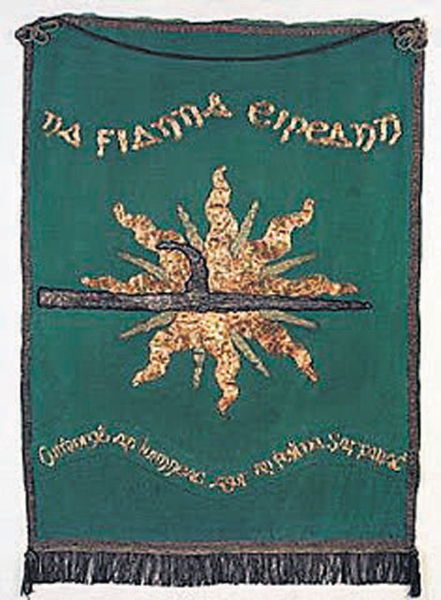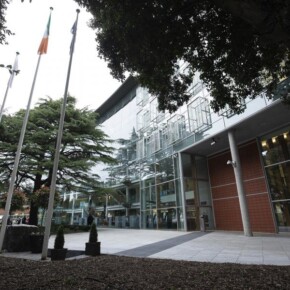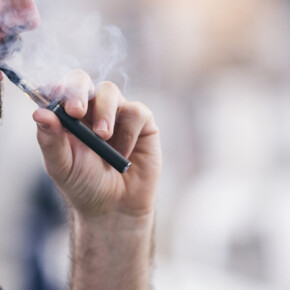HISTORY: Remembering An Gal Gréine
Dublin People 06 Mar 2016
AN Gal Gréine, or the Sunburst, is the legendary flag of the Irish Republican Scouting Organisation Na Fianna Éireann.
Founded in 1909 by Bulmer Hobson, then a prominent IRB figure and Countess Markieviecz, a leading militant republican, Na Fianna Éireann was modelled on the ancient Fianna of Fionn Mac Cumhaill. It aimed to inspire Irish youth to become involved in the struggle for independence.
By 1909 the Sunburst flag had long been part of the iconography of the Fenian tradition. Both the Fenian Brotherhood and the IRB had used several variations of the Sunburst, often depicting a golden sun centered on a green background.
The Fenians promoted the Sunburst as a radical alternative to Irish flags bearing a harp because such flags were often used by the British colonial administration or those that co-operated with them in Ireland.
With the formation of Na Fianna Éireann in 1909, the Countess decided the organisation should have its own distinct flag.
As the organisation was based on the mythical Fianna, An Gal Gréine, believed to be the original banner of Fionn Mac Cumhaill, was an obvious choice.
The Countess set about designing a banner that would be suitably modern while still paying homage to the revolutionary tradition of the flag. The flag designed was a blue banner with a golden sun emerging from the bottom corner.
A second, less well-known banner was also designed. Formally known as An Gal Gréine this design was closer to that of the original IRB flag with a bright yellow sun centred on a green background.
Across the centre of the sun runs a pike, the traditional weapon of the United Irishmen, while above the sun is the name Na Fianna Éireann emblazoned in bright yellow.
Beneath the sun the flag is adorned with the ancient motto of the Fianna of Fionn in Irish, ‘Glaine ár gcroí, Neart ár ngéag, Agus beart de réir ár mbriathar’, which translated, means ‘The purity of our hearts, the strength of our limbs, our commitment to our vow’. An interesting aspect of the flag is that the lettering and images are embroidered with a yellow metallic thread that has allowed the flag, though now over 100-years-old, to maintain all of its vibrancy.
Na Fianna Éireann would go on to play a prominent role in the 1916 Rising with Countess Markievicz appointed as second in command at the St Stephen’s Green Garrison.
In the aftermath of the Rising, Countess Markievicz was arrested and put on trial before a military court martial for her actions during Easter week.
During this period, the Countess’s home, Surrey House, at 49b Leinster Road Rathmines, long an open house to republicans, was raided by the British Army.
During the course of the raid, the British soldiers found An Gal Gréine, and stole it as a spoil of war.
The banner was taken back to England where it was held by the English Royal Family as a war trophy and displayed in their private collection in Windsor Palace.
In 1936 An Gal Gréine was presented to the Imperial War Museum in London, where it was displayed alongside other bounties of war, with a note that read: ‘On loan from her majesty the Queen’.
This year, to mark the centenary of the Rising, An Gal Gréine was given ‘on loan’ to Dublin City Council to be publically displayed in a 1916 Rising exhibition.
One hundred years after the Rising it is long past the time that An Gal Gréine should be permanently returned to the Irish people.











